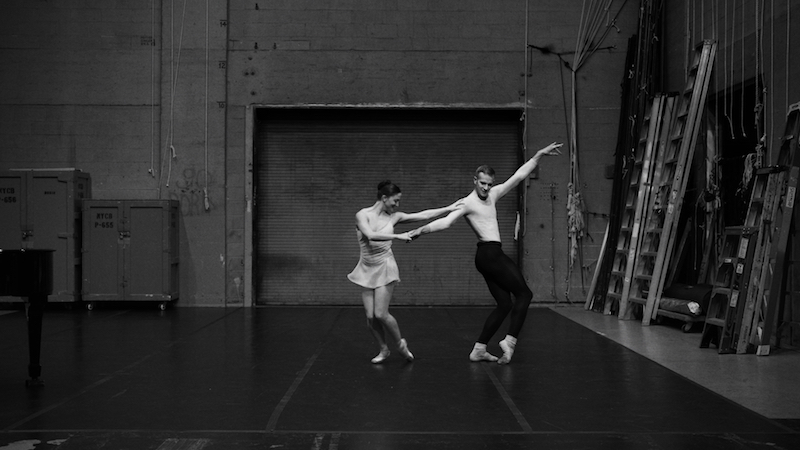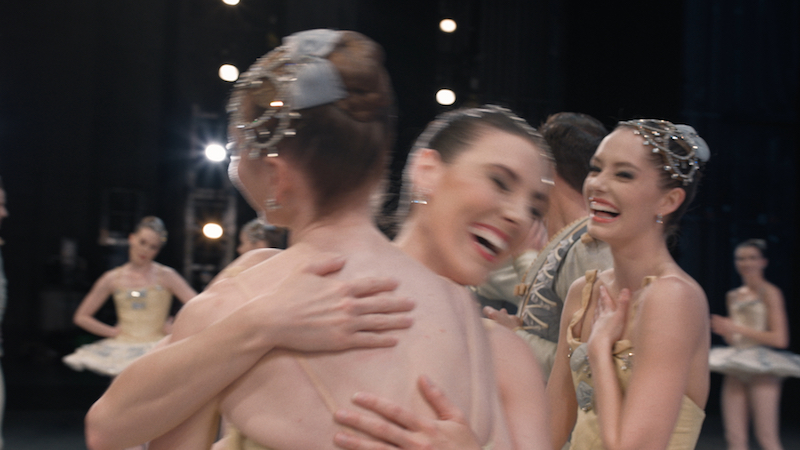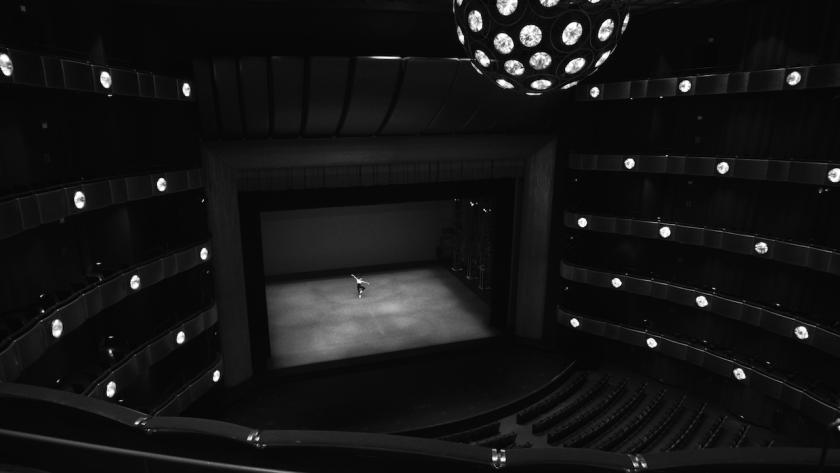It’s official. Masks are coming off across America while theatres remain dark. Over here, theatres are about to re-open and masks must be worn. An identical situation gives rise to different responses prompted by local preoccupations. Local preoccupations are at work in ballet too. Witness the 2021 Spring Gala performance put out digitally by New York City Ballet. Nothing says NYCB like the mid-20th-century choreography of George Balanchine and Jerome Robbins. And nothing says NYCB like having Chanel sponsor your first-ever digital Spring Gala, and a Hollywood name direct it.
Happy to relate, in the understated, short, mostly black-and-white film that results, Sofia Coppola nails it, she really does. Following a clutch of the company’s dancers as they re-enter, one by one, the Lincoln Center studios that have lain empty and silent for more than a year, her camera scans the rails of costumes waiting to be worn and shelves stacked high with new pointe shoes. Already one feels the dancers’ trepidation. How will it feel, returning to that working life?
Famously, in the opening number of Jerome Robbins’ 1969 classic Dances at a Gathering, a lone male dancer comes on stage and contemplates the floor for a few moments before slowly starting to dance. The music is a wistful Chopin mazurka, and it’s often suggested that the intention behind the dancer’s initial inaction is to signal some distant memory, a slavic folk memory perhaps. Here, as City Ballet principal Gonzalo Garcia gazes at the studio floor onto which he is about to launch his first performance in 14 months, Coppola’s camera gives us a more recent backstory, just as poignant. The director is quirky in her choice of locations – only a couple of pieces are danced on the actual stage of the Koch Theater. George Balanchine’s Duo Concertant, despite its cosy connectivity between the two dancers (Ashley Bouder and Russell Janzen, pictured above) and two musicians (violinist Arturo Delmoni and pianist Susan Walters), is shot in a backstage loading bay, ladders stacked against the walls, the grand piano jammed against a steel security door. This draws attention to the almost comical chug of the steps and Stravinsky’s stridency, as if the dancers’ limbs and the fiddler’s bow are interlocking parts in theatrical machinery. Less compelling, to my view, is the film’s placing of the Liebeslieder Waltzes extract (Balanchine again, to Brahms) in the vast polished expanse of the public foyer. Where are the singers hiding? It’s always reassuring to be shown the source of musical accompaniment, even if it means showing someone cueing a laptop. All the music, we're told, is provided by the NYCB Orchestra.
The director is quirky in her choice of locations – only a couple of pieces are danced on the actual stage of the Koch Theater. George Balanchine’s Duo Concertant, despite its cosy connectivity between the two dancers (Ashley Bouder and Russell Janzen, pictured above) and two musicians (violinist Arturo Delmoni and pianist Susan Walters), is shot in a backstage loading bay, ladders stacked against the walls, the grand piano jammed against a steel security door. This draws attention to the almost comical chug of the steps and Stravinsky’s stridency, as if the dancers’ limbs and the fiddler’s bow are interlocking parts in theatrical machinery. Less compelling, to my view, is the film’s placing of the Liebeslieder Waltzes extract (Balanchine again, to Brahms) in the vast polished expanse of the public foyer. Where are the singers hiding? It’s always reassuring to be shown the source of musical accompaniment, even if it means showing someone cueing a laptop. All the music, we're told, is provided by the NYCB Orchestra.
The single new piece in this short programme is Solo, made for dancer Anthony Huxley by Justin Peck, the company’s Resident Choreographer and a collaborator with Coppola on this film. Danced in practice dungarees on an empty stage to music that announces its emotional intentions in capital letters (if it were in my gift, I’d put a 20-year moratorium on Samuel Barber’s Adagio), the piece pulls two ways at once. But ultimately the sincerity of Huxley’s dancing, and the choreographer’s skill in making streams of intricate movement look like one long, loose improvisation, wins through.
 It’s only when the curtain rises on the finale of Divertimento No.15 that the film flips into colour. It wouldn’t be a Balanchine tutu ballet without that white dazzle against a back wall of Prussian blue. Here, for the brief remaining minutes, we’re shown NYCB at its grandest, a crisp corps de ballet bobbing and fluttering to Mozart in the court of queen bee Tiler Peck. Neo-classical perfection.
It’s only when the curtain rises on the finale of Divertimento No.15 that the film flips into colour. It wouldn’t be a Balanchine tutu ballet without that white dazzle against a back wall of Prussian blue. Here, for the brief remaining minutes, we’re shown NYCB at its grandest, a crisp corps de ballet bobbing and fluttering to Mozart in the court of queen bee Tiler Peck. Neo-classical perfection.
The best thing of all about this lovely half-hour film is the way Coppola and her cinematographer Philippe Le Sourd stand back and allow the dancers to shine. This is ultimately a rejoicing in their craft, and their coming together after being so long apart. And as the camera dives behind the stage curtain to show them panting and hugging and laughing immediately after relaxing their final pose, we know this venerable American company is still in good heart.














Add comment